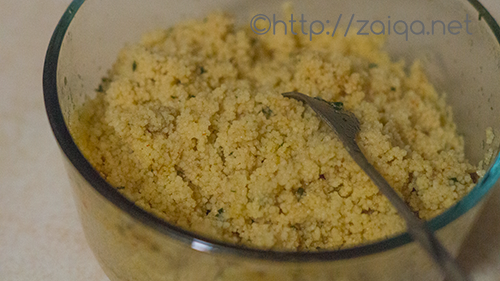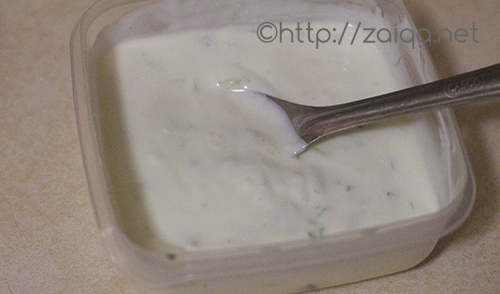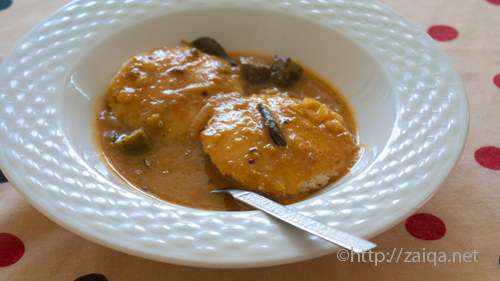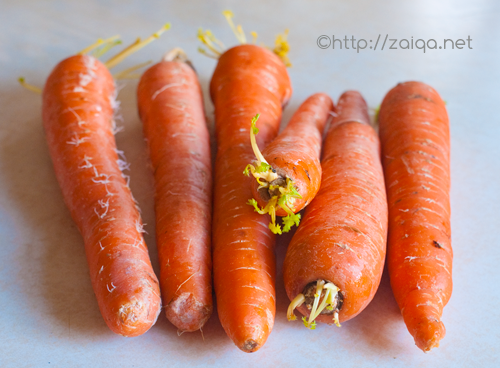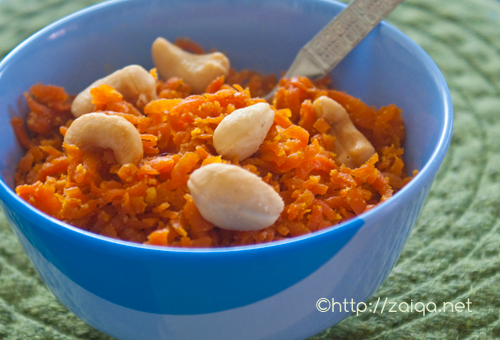I was immensely thrilled to learn just a few months back during this last Ramadan that Haleem is the first Hyderabadi delicacy to be granted the Geographical Indication Certificate (GI status) along the lines of the famous Tirupati laddu, Darjeeling tea, Goan feni and Banarasi silk. So it will only be referred to as ‘Hyderabadi Haleem’ from now on. How cool is that. I wish that Biryani and many other such iconic dishes of the city too get the recognition as soon as possible.
Biryani is a dish of royalty, of the nizams of the Hyderabad and the Moghuls, known for its cooking method, delicate flavor, heavenly aroma and the use of many spices in the right proportion. In Persian “Birian” means ‘fried before cooking’. There exist two kinds of Biryani, the non-vegetarian and the vegetarian versions. I have already blogged about both the kachchi (raw) and pakki (cooked) method of the Chicken and Mutton Biryani. You can find the recipes here. Apart from the Hyderabadi Biryani, many other versions also do exist, like the Iranian Biryani, the Khaibari Biryani (from Afghanistan) and Pakistani Biryani, all with a few regional variations that change with religion, geography and culture, but all under the same name Biryani. Today Hyderabadi Biryani caters to palates all over the world.
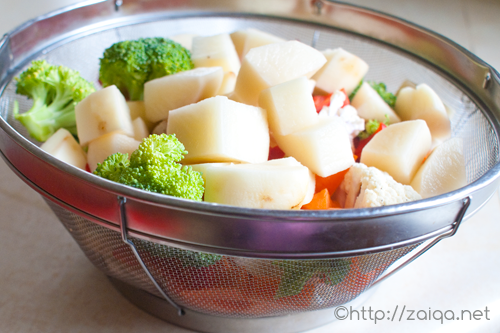
Chopped Mixed Vegetables
Like I had mentioned in my last post, I love to prepare traditional dishes like Nihari, Biryani and Haleem during the cold season. So the last weekend, I prepared Hyderabadi Vegetable Biryani along with Tomato Chutney as the main course for a dinner party.
Tarkari in Urdu language means vegetables. Just like the non-vegetarian version, the vegetarian version is just as ambrosial and a delightful crowd pleaser. All my guests loved it. I do not know how I missed writing about this Biryani all this while. So without further ado, for all those who were waiting for the Hyderabadi version of the Vegetable Biryani, here goes. Following is my Ammi’s recipe.
Hyderabadi Tarkari ki Biryani – Vegetable Biryani
Serves: 6- 7
Ingredients:
Fragrant long grained Basmatic Rice – 3 cups
Warm milk – 3/4 cup
Saffron strands – two pinches
Canola oil – 5 tbsp (or Ghee)
Yellow Onions – 2, large, finely sliced
Ginger garlic paste – 1 tbsp
Long Green chillies – 2, each slit lengthwise and chopped into half
Mixed Vegetables – large cauliflower florets, large broccoli florets, carrots cut into 2″ long thick sticks, capsicum (any color) cut into long and thin strips, green beans cut into 2″ long pieces, boiled/frozen green peas, quartered potatoes, quartered firm red tomatoes – 5 cups
Cumin seeds – 2 tsp
Red Chilli powder – 2 tsp
Salt – 4 1/2 tsp
Turmeric powder – 1/4 tsp
Cilantro – 1/2 cup, loosely packed, roughly chopped
Yogurt – 250 ml, 1 cup
Caraway seeds/Shahzeera – 1 tsp
Dried Bay leaf – 2
Cloves – 4
Green cardamoms – 5
Mint leaves – 1 cup, loosely packed, roughly chopped
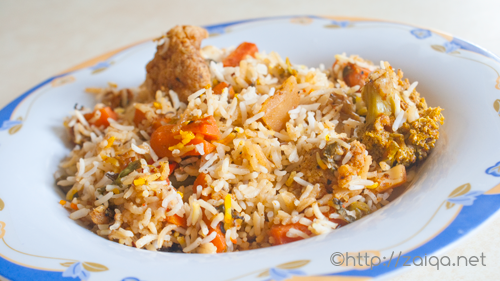
Tarkari Biryani – Vegetable Biryani
Method:
1. Wash the rice in several changes of water and let soak in cool surplus water in a vessel.
2. In a small cup, pour in warm milk and saffron strands. Keep aside.
3. In a large and wide saucepan, add oil and as soon as it warms up add the sliced onions and fry them while stirring frequently until evenly golden brown in color. Remove the pan from heat and using a slotted spoon transfer half of the fried onion into a platter and reserve for garnish.
4. In the same saucepan, add the cumin seeds, ginger-garlic paste and green chillies, stir fry for a minute. Immediately add all the mixed vegetables. Also add red chilli powder, 1 1/2 tsp of salt and turmeric powder and chopped cilantro. Mix well very gently. Increase the heat to high and let the vegetables sear. Give the vegetables a stir every two minutes, until they get seared on all sides. Now add the yogurt and mix. Lower the heat to medium high and let cook covered for 3-5 minutes. Once the vegetables are cooked, (but not mushy) (do not overcook the vegetables) (pierce a knife into a potato and check if it is done) uncover and cook on high while stirring whenever required until the vegetables are almost dry. Keep aside.
5. In a large heavy bottomed vessel pour in surplus water and add shahzeera, dried bay leaf, cloves, green cardamoms and cover with a lid. Let it come a rolling boil. Once boiling, drain the soaking rice and add to the boiling water. Let it cook until the rice if half done. Once done, drain the rice and keep ready. Now starts the layering process of the Biryani. Working quickly, in the same vessel, add half of the drained rice. Now add the cooked mixed vegetables. Spread over the rice evenly. Now spread the reserved fried onions meant for garnish, and the chopped mint leaves evenly over the vegetables. Next, arrange the left over rice evenly covering the vegetables. Lastly, pour evenly the saffron milk. Cover the vessel properly with aluminium foil or a tight lid (with vents closed with dough if any) so that no steam can escape. You can also apply dough to seal the lid which is the traditional method.
6. Cook the Biryani on high for 2 minutes. You will notice that a good amount of steam has built up, which is called as the pehli bhaap, meaning first steam. Then take a flat dosa tawa and keep it below the vessel (so that the bottom does not burn and it slow cooks evenly) and lower the heat to simmer and let it slow cook for 30 minutes, until done. Remove from heat. Let the Biryani sit for 15 minutes before serving. Dig a spoon into the vessel and gently mix the Biryani. Serve on a platter. For a special touch, garnish with more fried onions, finely chopped cilantro and mint leaves, toasted/fried almonds or cashewnuts or pinenuts or raisins.
Serve this Biryani along with Mirchi Ka Salan or Baghare baingan or Tamatar ki Chutney or plain and simple Dahi ki Chutney for a sumptuous Hyderabadi meal.
Note:
1. You can also add chopped paneer cubes, sliced mushrooms, and soy nuggets along with the vegetables.
2. Brocolli is not usually added to the Biryani, I added it because I love it.
Luv,
Mona

